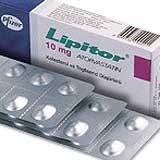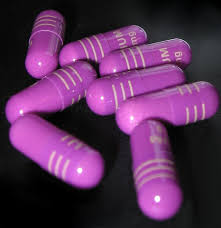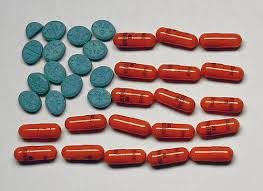Ecstasy is the street name for MDMA (3,4-Methylenedioxymethamphetamine), also known as XTC, believed to be the most widely used recreational drug in the world, with possible therapeutic benefits for some people. Originally synthesized back in 1912, MDMA was originally created to control bleeding. It experienced a slight revival in the 1950’s when the US Military wanted to study the behavioral and physiological effects of toxicity, but it wasn’t until the early 1970’s that it gained widespread acceptance and popularity particularly among those who use cocaine, heroine, and marijuana. Among doctors, it’s known to lower inhibitions, help treat depression and anxiety, and remove chronic pain associated with terminal illnesses.
While this may sound good on the surface, the negative side affects of MDMA will also include neurotoxin damage to the Central Nervous System, confusion, depression, sleep problems, an increased craving for drugs, severe anxiety, and paranoia. Both during and sometimes weeks after taking MDMA some people have been known to have psychotic episodes that have resulted in death.
Other physical symptoms such as grinding your teeth, muscle tension, blurred vision, rapid eye movement, nausea, chills or sweating, and fainting are also known to be common.
Long term effects include circulatory problems resulting in heart disease, and brain damage to the parts of the brain that include memory and thought. Especially susceptible are those neurons that contain Dopamine, damage to these cells results in a decrease of motor function resulting in such neuro-muscular diseases as Parkinson’s disease, and the big one- a reduced or terminated sex drive.
All drugs have one thing in common- their toxicity, and their ability to create toxicity within the body. This toxicity will force the body to react to it. This toxicity also comes in various levels, and can be targeted to reach certain parts of the body, but in the end, the body as a whole will basically respond the same way. Once a toxin is discovered, the body will immediately start to try and expel it, either through vomiting; sweating it out through the pores, and more likely excreting it out though the urine and diarrhea.
While Alcohol is not generally considered to be a prescription drug, it is only sold by those who hold a license, and it ranks right up there with the same signs and symptoms produced by meth, cocaine, and Oxycontin. Once ingested, alcohol; i.e. any toxin, will stimulate the adrenal glands into producing a host of chemicals that will try to rid the body of this foreign substance. Among these chemicals you will find adrenaline, cortisone, endorphins, and several other things that make people feel good. So while drinking and taking drugs gives a temporary relief from what ever ails you, it is actually exhausting the body by depleting it of much needed water, and water soluble vitamins and minerals that are trying to fight this foreign substance that is invading your body. This is why even though a person can drink alcoholic liquids all night; they still wake up dehydrated and nauseous the next morning; if they wake up at all.
Synthetic drugs have the same effect, they force the body to release all kinds of chemicals in response to this substance, and certainly one of them will give you temporary relief. But the question to ask is, whether or not this temporary relief of whatever is bothering you, is worth the long term effects the synthetic drug will most likely bring.
ALCOHOL
 Professor David Nutt, from the Univ. of Bristol; and Professor Colin Blakemore, chief executive of the Medical Research Council of England have found that while ecstasy kills an average of about 10 people annually, they consider alcohol abuse more dangerous than drug abuse because of its easy access, and widespread, social acceptance. When Ecstasy is compared to more than 300 people who are killed annually by way of direct alcohol poisoning, and tens of thousands of people injured or killed in traffic accidents each year, the liver and heart disease it causes, as well as a host of other problems that are brought on by drinking alcohol, ecstasy has a relatively small number of fatalities. Alcohol is far and away to most pervasive substance being abused, resulting in cirrhosis of the liver, infections, sleeping disorders and sexual dysfunction. Recently, it has been found that consuming alcohol will also make one more susceptible to cancers of various kinds because of its destructive nature on the body’s immune system.[1]
Professor David Nutt, from the Univ. of Bristol; and Professor Colin Blakemore, chief executive of the Medical Research Council of England have found that while ecstasy kills an average of about 10 people annually, they consider alcohol abuse more dangerous than drug abuse because of its easy access, and widespread, social acceptance. When Ecstasy is compared to more than 300 people who are killed annually by way of direct alcohol poisoning, and tens of thousands of people injured or killed in traffic accidents each year, the liver and heart disease it causes, as well as a host of other problems that are brought on by drinking alcohol, ecstasy has a relatively small number of fatalities. Alcohol is far and away to most pervasive substance being abused, resulting in cirrhosis of the liver, infections, sleeping disorders and sexual dysfunction. Recently, it has been found that consuming alcohol will also make one more susceptible to cancers of various kinds because of its destructive nature on the body’s immune system.[1]
LIPITOR
 The most popular and widely used prescription drug on the market today is considered to be Liptor, manufactured by Pfizer, and used to treat high cholesterol. It was known to produce over $32 billion in annual sales, in the year 2004 alone.
The most popular and widely used prescription drug on the market today is considered to be Liptor, manufactured by Pfizer, and used to treat high cholesterol. It was known to produce over $32 billion in annual sales, in the year 2004 alone.
All human body tissues synthesize cholesterol in conjunction with their normal, daily functions. It is only that cholesterol that is made in the liver that actually reaches the blood and causes plaque buildup that can lead to heart disease. Most of the body’s cholesterol is used to assist pituitary, adrenal and sex hormones; much of it is used in the processes of normal brain function, some of it is used to process bile acids that help absorb foods, and still other cholesterol is converted into vitamin D when the skin is exposed to sunshine. Cholesterol is only one substance used in the overall digestive and synthesizing process’ that takes place hourly within the body; 24 hours a day. The body must have cholesterol available in order to function properly.
Lipitor, far and away the most popular drug marketed in the US, will “lower cholesterol”. It makes no distinction of what kinds; it simply interferes with the body’s ability to absorb all cholesterol, in order to ward off the risk of plaque buildup, and the possibility of a heart attack. Ironically, by removing the cholesterol used during normal brain, hormone, and digestive function, drugs like this will actually increase the probability of heart attacks by disrupting the bodies natural, everyday cycle of events.
Tahoe resident Doug Peterson used to be an active skier, biker and scuba diver. Doug has never had a heart attack, but because his family history showed that Doug was likely to have high blood pressure, his doctor started prescribing Lipitor as a precautionary measure. Within several months, Doug’s health started to deteriorate fairly quickly. Now, approximately 3 years later, Doug appears as though he has had a stroke, and with no apparent reason. His speech is slurred; he has trouble walking in a straight line or signing his name, and is constantly fatigued.
While there was no concrete evidence to link Doug’s physical problems to Lipitor, after researching his issues and comparing them to others in the Tahoe region, and the fact that Lipitor was the only drug he was taking, there is no doubt in his mind that Lipitor was the cause of it all.[2]
NEXIUM
 Nexium is a prescription medicine used to control acid reflux and heartburn. This is done by “turning off” the acid producing pumps within the digestive tract. The manufacturer notifies us that the side effects are known to be headache, diarrhea and abdominal pain, and yet they still consider it safe for children.
Nexium is a prescription medicine used to control acid reflux and heartburn. This is done by “turning off” the acid producing pumps within the digestive tract. The manufacturer notifies us that the side effects are known to be headache, diarrhea and abdominal pain, and yet they still consider it safe for children.
By interfering with the digestive abilities of the stomach, Nexium inadvertently interferes with the body’s ability to digest and absorb all nutrients, therefore causing far more problems that can be realistically listed here. In general, an enlarged abdomen, allergic reaction, asthenia, back pain, chest pain, chest pain, facial edema, peripheral edema, hot flushes, fatigue, fever, flu-like disorder, generalized edema, leg edema, malaise, pain, and rigors are just a few of the issues associated with taking Nexium. For a complete list of the results of this blind test, click here.
Too little hydrochloric acid impairs protein digestion, and the absorption of vitamin C. It also allows B vitamins to be destroyed, and prevents minerals from reaching the blood to the point that anemia can settle in and bones to be crumbled.[3] Rather than stopping the body’s normal need to create a working environment during the process of digestion, it would be far wiser for someone with indigestion to strengthen the sphincter muscle at the top of the stomach, in order to keep the acid in your stomach where it belongs. This can easily be done by adding vitamin C to the diet.[4] Many antacids can render inactive the good bacteria living within the intestines that help keep viruses and bacteria in check. Without these naturally occurring bacteria, infections are left to run rampant.
ADVAIR DISKUS
 ADVAIR addresses airway constriction and inflammation. How they do this is still unclear. If you visit their website you will see a lot of rhetoric about how their product will “address constriction and inflammation”, but say nothing about how this takes place. You are referred to a doctor who should explain it to you, but in the end, how Advair works is a mystery.
ADVAIR addresses airway constriction and inflammation. How they do this is still unclear. If you visit their website you will see a lot of rhetoric about how their product will “address constriction and inflammation”, but say nothing about how this takes place. You are referred to a doctor who should explain it to you, but in the end, how Advair works is a mystery.
We do see plenty of blogs about what the result are;
Terra Charmont wrote; “I have had the same experience. The awful sore throat and mouth from thrush, voice change and headaches. I would NOT recommend [Advair] for mild athsma as the side effects just aren’t worth it!” Another woman named Tina can be found at this link, and she has this to say; “I have seen this question posted several times but have seen no answer! 🙁 How does one get off of Advair? Just cold turkey? Surely you cut the doses down, but how? Do you notice your lungs immediately getting worse as you get off of it? I want so badly to get off of this stuff, I’ve been on it for about 6 yrs now and it’s caused me sooo many problems!!! 🙁 “
Side effects that have been reported with Advair include upper respiratory tract infections, headaches, sore throat, bronchitis, coughing, nausea, sinus infections, hoarseness, muscle spasms and bone pain, fever, menstrual problems, thrush (open sores on mucous membranes), abdominal pains, diarrhea, bloody nose, and dizziness.[5] Side effects that are less common can include a runny nose, shakiness, and increased sweating. While COPD’s can have may causes, they are often blamed on allergies, but instead of removing anything and everything in the diet in the hopes of finding the one thing that triggers a reaction, adding healthful foods so that the body can defend itself against histamines is a far better way to address the problem.
OXYCONTIN
 First created to help those with chronic pain, Oxycontin has developed into one of the most widely abused drugs today. Similar to Percocet, Oxycontin is a time released tablet that releases small amounts of narcotic every hour, and if used according to the directions, it is very effective in relieving pain without any side effects of addictions.
First created to help those with chronic pain, Oxycontin has developed into one of the most widely abused drugs today. Similar to Percocet, Oxycontin is a time released tablet that releases small amounts of narcotic every hour, and if used according to the directions, it is very effective in relieving pain without any side effects of addictions.
However, people who abuse drugs have found that grinding the tablet into a powder and snorting it through their nose, or injecting the full dose directly into their veins will give a much more intense, immediate high than allowing it to release its contents over several hours. This concentrated amount has been known to kill some people directly, or if mixed with other drugs, it can kill them by association.
If someone has been taking such concentrated doses, withdrawal symptoms can be very painful, and even deadly. Hot and cold sweats, heart palpitations, uncontrolled coughing and muscle twitching, diarrhea, violence, depression and more can result from trying to wean yourself off this drug if you have become accustomed to taking it in its full strength for any length of time. If used properly, Oxycontin is very effective in relieving pain- if abused it can kill you.
PLAVIX
Plavix is used to prevent unwanted blood clots after childbirth and heart attacks or strokes. While it is administered with good intentions, Plavix can also cause internal bleeding unbeknownst to the patient, and yet it is marketed as if it can be taken like any other daily vitamin.
Like all prescription drugs, if used properly they do serve a purpose and Plavix is no different. It is meant for a temporary relief of blood clotting, and since there is no euphoric effect associated with taking this drug, there is very little abuse of it. However, major bleeding can take place if you are going to have any surgery or dental work, so letting your doctors know about it is always wise. Plavix is also known to cause flu-like symptoms, headaches and body pains, dizziness bruising, rashes, and diarrhea.
ZOLOFT
 The antidepressant Zoloft is from the selective serotonin reuptake inhibitor (SSRI) class of drugs. It was first introduced to the market in 1991 by Pfizer. Also known as Sertraline, Zoloft is primarily used to treat depression, panic and obsessive- compulsive disorder in adults, and social anxiety in both adults and children. Because people who suffer from these conditions want it kept private, the use of Zoloft was not well known, but the truth is it was the most prescribed antidepressant in the U.S. in 2007. Web MD states a sober reminder;
The antidepressant Zoloft is from the selective serotonin reuptake inhibitor (SSRI) class of drugs. It was first introduced to the market in 1991 by Pfizer. Also known as Sertraline, Zoloft is primarily used to treat depression, panic and obsessive- compulsive disorder in adults, and social anxiety in both adults and children. Because people who suffer from these conditions want it kept private, the use of Zoloft was not well known, but the truth is it was the most prescribed antidepressant in the U.S. in 2007. Web MD states a sober reminder;
“… that your doctor has prescribed this medication because he or she has judged that the benefit to you is greater than the risk of side effects…”.
When read in context, they are basically saying that there are many side effects, but they are better than committing suicide.[6] The FDA requires all antidepressants, including Sertraline, to carry a “black box warning” stating that this product is known to increase the risk of suicide in persons younger than 25. Among other side effects are tremors, dizziness, nausea, diarrhea, insomnia, dry mouth, and a decreased libido.
Zoloft also carries with it a potential to be highly addictive, such that those who try to end its use abruptly often experience discontinuation syndrome, to include irritability, agitation, dizziness, headache, nervousness, crying, emotional instability, bad dreams and anger.
Adderall
 Adderall was first manufactured about 20 years ago, as a way to loose and control weight. Doctors quickly prescribed its use for Attention Deficit Disorder in children, back in 1991 when the FDA approved it for unrestricted use.
Adderall was first manufactured about 20 years ago, as a way to loose and control weight. Doctors quickly prescribed its use for Attention Deficit Disorder in children, back in 1991 when the FDA approved it for unrestricted use.
Since Adderall’s side effects were found to be much less toxic than Ritalin’s, the patients reported less “peaks and valleys” that they experienced with Ritalin. However, Adderall is an amphetamine that works the same on children as it does on adults; they are addictive and come with severe withdrawal symptoms. Among them are extreme fatigue, depression and heart arrhythmias, loss of appetite, weight loss, and insomnia. It is not “American” to take amphetamines, as this advertisement would lead you to believe.
PROCRIT
Procrit is a man-made protein intended to increase red blood cell production in the treatment of fatigue and anemia, for patients with diseases such as HIV, cancer, or kidney failure. It comes with a huge red flag, warning people that the use of this drug actively increases mortality, risk of tumors, cardiovascular disease and the risk of thrombosis. Many people also experience headaches, body aches, diarrhea, and irritation at the injection site.
Doctors use Procrit during chemo-therapy to help raise the red blood cell count, but it is believed and widely accepted that this is a last attempt for terminally ill people. Just because a doctor prescribes it, doesn’t mean that it is safe. It is strongly advised that the use of Procrit is immediately discontinued right after a course of chemotherapy has been finished.
Like a lot of drugs, people who are facing death will consider things that are known to cause more problems, simply because they believe they have no other options left. Procrit is one of these drugs.[7]
VICODIN
 Vicodin is a non-narcotic, commonly presribed pain killer and cough reliever. It has however, been found to become extremely habit forming, and if taken over a long period of time can make the user mentally and physically dependant on it. Eventually, the user will also find that the previous doses no longer work for them, and they believe they need more in order to solve their problem. This is one reason why there are so many accidental deaths associated with Vicodin.
Vicodin is a non-narcotic, commonly presribed pain killer and cough reliever. It has however, been found to become extremely habit forming, and if taken over a long period of time can make the user mentally and physically dependant on it. Eventually, the user will also find that the previous doses no longer work for them, and they believe they need more in order to solve their problem. This is one reason why there are so many accidental deaths associated with Vicodin.
Side effects can include Dizziness, light-headedness, nausea, sedation, vomiting. Also, if you have any known allergies to hydrocodone, narcotic painkillers, or acetaminophen it is imperative that you not take Vicodin.
While many drugs do help save lives, the majority of them have way too many side effects that prevent them to be fully embraced by the trusting public. It is well known that drug manufacturers are funding most of the research that goes into the medical industry, and that from 2001 to 2002, the drug industry spent almost $100 million- a record amount- to lobby the government and try to get them to implement socialized medicine with the hopes of being able to tap into all that tax money allocated for Medicare.
The drug manufacturer’s have so much influence over the medical industry that if a doctor fails to follow the accepted treatment outlined by the drug companies, he is in danger of committing malpractice in most parts of the country. Because of the manufacturer’s support of the medical education system, doctors are taught little to nothing about nutrition and the use of alternative medicine. Instead, their primary methods of treatment consist of learning about drugs, and how to prescribe them. If you take a good look at doctors these days, they appear to be a walking bill board, promoting the drug companies agenda. It is believed that as much as 50% of the new doctors supplies and everyday tools are gifts from a drug manufacturing company that has their logo pasted all over it.
 While synthetic drugs do have their place in society, especially among the infectious and contagious diseases still lurking about, they are truly over used in several areas, and frequently end up causing way more problems than they solve. Many of our elderly population are dismissed as senile or demented, when in fact it is their prescription drugs that are making them this way. Drugs don’t cure disease; they only provide temporary relief from the signs and symptoms. Whenever you interfere with the cells natural, metabolic function, at their molecular level, you are increasing the likelihood of mutations, also known as cancer. If we are ever going to truly heal ourselves, we need to start to look at the source of our problems; that we are not giving our body what it needs to function, i.e. real, unprocessed food.
While synthetic drugs do have their place in society, especially among the infectious and contagious diseases still lurking about, they are truly over used in several areas, and frequently end up causing way more problems than they solve. Many of our elderly population are dismissed as senile or demented, when in fact it is their prescription drugs that are making them this way. Drugs don’t cure disease; they only provide temporary relief from the signs and symptoms. Whenever you interfere with the cells natural, metabolic function, at their molecular level, you are increasing the likelihood of mutations, also known as cancer. If we are ever going to truly heal ourselves, we need to start to look at the source of our problems; that we are not giving our body what it needs to function, i.e. real, unprocessed food.
[1] http://www.streetdirectory.com/travel_guide/27207/medical_conditions/four_major_negative_effects_of_alcohol.html
[2] http://www.communicationagents.com/sepp/2004/01/31/lipitor_the_human_cost.htm
[3] Let’s Get Well, Adelle Davis
[4] Let’s Get Well, Adelle Davis
[5] http://asthma.emedtv.com/advair/advair-side-effects.html
[6] http://www.webmd.com/drugs/mono-8095-SERTRALINE+-+ORAL.aspx?drugid=35&drugname;=Zoloft+Oral
[7] http://www.rxlist.com/procrit-drug.htm